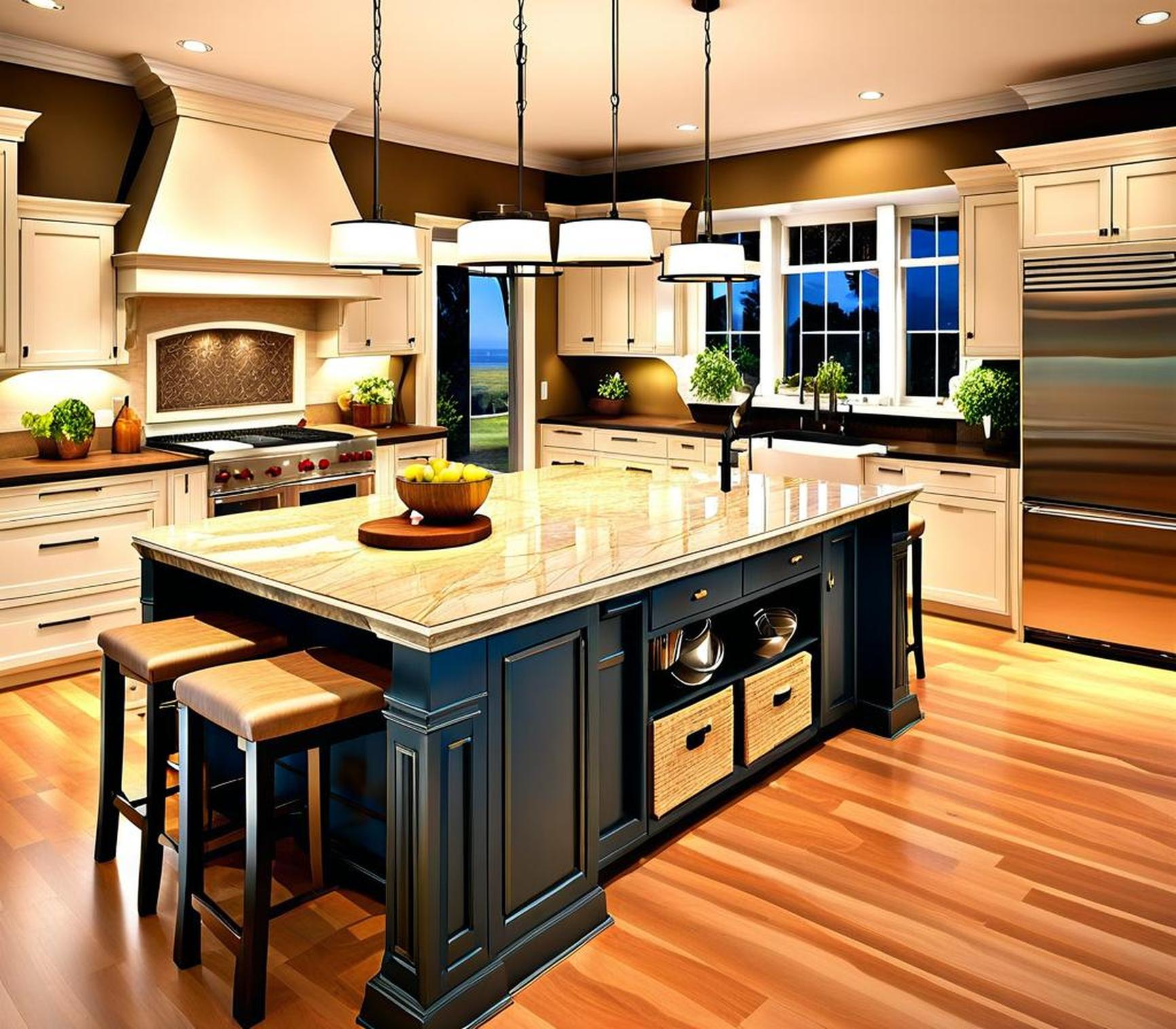If you’re looking to upgrade your kitchen, installing a kitchen island is one of the most versatile and beneficial upgrades you can make. Kitchen islands not only provide much-needed extra storage and counter space, but they also create an inviting hub for meal preparation, casual dining, entertaining guests, and more. The right island can truly enhance the entire look, workflow, and functionality of your kitchen.
Types of Kitchen Islands
Kitchen islands come in a variety of shapes, sizes, and styles to suit any taste and fit seamlessly into your existing layout and cabinetry. Here are some of the most popular island types:
Freestanding Islands
Freestanding kitchen islands are completely detached from the other cabinets and can be positioned anywhere in your kitchen. Many freestanding islands feature wheels or casters on the base, making them easy to move around.
Pros:
- Mobile – can be repositioned as needed
- Typically more affordable than custom built-in islands
- Easy to install – no construction or renovation required
Cons:

- Wheeled bases can damage floors if moved frequently
- Provide less sturdy prep surface than permanently installed islands
Built-In Islands
Built-in, or customized islands, are designed specifically for your kitchen layout. They seamlessly integrate into your existing cabinetry and fixtures for a cohesive look. Built-ins offer limitless customization options to suit your precise storage needs.
Pros:
- Fully customized for your space and requirements
- Choice of built-in storage solutions
- Permanent fixture that anchors the kitchen
Cons:
- More expensive due to custom construction
- Permanent placement limits flexibility
- May require renovation work
Maximizing Storage in Your Kitchen Island
One of the biggest perks of adding a kitchen island is gaining extra storage space. Islands allow you to keep items right at hand instead of making multiple trips to rummage through distant cabinets and drawers. There are endless options when it comes to building storage into your island.
Drawers
Deep, full extension drawers are perfect island storage for pots, pans, utensils, and knives that you use regularly when cooking. Consider including compartments or trays to keep items neatly organized within the drawers. Having everyday cooking essentials stored in your island keeps them readily accessible and near food prep areas.
Doors and Cabinets
For items used less frequently like bakeware, table linens, spare dishes, or small kitchen appliances, enclosed cabinet storage in your island is ideal. The cabinets keep items tidy and hidden from view while still keeping them nearby for when needed. Adjustable shelves let you customize the storage layout. Door-mounted racks on the inside are handy for storing cutting boards and trays vertically.
Other smart island storage ideas are towel racks, slide-out trays for spices, or built-in knife blocks. Get creative with your storage to make the most of every inch!
Countertop Materials for Kitchen Islands
An essential aspect of any kitchen island is the countertop. This surface sees heavy daily use, so durability is key. When selecting your island countertop, consider heat resistance, water resistance, stain resistance, maintenance requirements, and visual appeal. Here are some top contenders:
Granite
Granite is a classic choice loved for its natural beauty, variety of patterns and colors, and superior resilience. Properly sealed granite is highly stain and heat resistant. While durable, granite can chip if subject to heavy impacts.
Pros:
- Timeless, stylish material
- Rarely stains and is heat resistant
- Durable for years of use
Cons:
- Relatively costly
- Requires yearly sealing
- Can chip if impacted
Butcher Block
Butcher block offers a handsome, traditional look for a kitchen island. The richly grained patterns and colors create visual warmth. Butcher block wears well over time, developing a patina, but requires regular maintenance like oiling to prevent cracking or warping.
Pros:
- Beautiful natural material
- Adds vintage character
- Durable work surface
Cons:
- Prone to staining if not properly sealed
- Needs frequent oiling to maintain
Adding Seating to Your Island
A major advantage of kitchen islands is the ability to incorporate seating. Island stools create an informal dining nook or cocktail seating for entertaining. There are many seating options to consider that impact comfort and aesthetics.
Barstools vs Chairs
Barstool seating rings the perimeter of the island countertop, maximizing leg room and seating capacity. Chairs can also accompany an island and work well if you require more back support. Mixing barstools of different heights and chair styles creates an eclectic ensemble.
Swivel vs Stationary
Swivel barstools rotate a full 360 degrees for easy maneuverability and conversation amongst guests. Stationary stools still allow you to twist back and forth but occupy less space. They also tend to cost less.
Determine how many seats your island can accommodate while still allowing enough elbow room and walkway space around it. Carefully measure your island and kitchen dimensions first.
Installing your kitchen island in a strategic location maximizes its functionality. Consider traffic flow, room dimensions, angles to existing cabinetry, and proximity to appliances and fixtures.
Guidelines for optimal island placement:
- Allow for at least 3-4 feet clearance on all sides so multiple people can move comfortably around it at once
- Position near the fridge, oven, and primary food prep zones in your kitchen to enhance workflow
- Align the island parallel with existing cabinetry for an organized look with clear pathways around it
A kitchen designer can help you determine the ideal location if your space has any quirks or restrictions.
